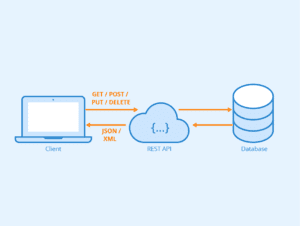Table of Contents
Welcome to another exciting exploration into the world of WordPress! Today, we’re diving into a topic that’s been stirring up some interesting discussions among developers and WordPress enthusiasts alike: the future of WordPress plugins. Will they continue to be dominated by PHP, or is JavaScript set to take the lead?
This question is not just a matter of curiosity. It’s a topic of significant importance in the context of WordPress development. As we know, WordPress, the world’s most popular content management system, is built on PHP. It’s the backbone of countless plugins that extend the functionality of WordPress, making it the versatile platform we all know and love.
However, JavaScript has been making waves in the WordPress community, especially with the advent of the Gutenberg editor, which relies heavily on JavaScript. This shift has led many to wonder if JavaScript might play a more prominent role in the future of WordPress plugins.
In this article, we’ll delve into the strengths and weaknesses of both PHP and JavaScript in the context of WordPress plugin development. We’ll also look at the current trends and expert predictions about the future of these technologies in WordPress.
Whether you’re a WordPress developer, a website owner, or just someone interested in the future of web technologies, this article is for you. So, let’s dive in and explore the future of WordPress plugins: JavaScript or PHP?
Background
Brief History of WordPress Plugins
WordPress plugins have been a part of the WordPress ecosystem since the platform’s early days. The first WordPress plugin, called “Hello Dolly,” was released alongside WordPress 1.2 in May 2004. This plugin, which is still included in every WordPress installation today, was a simple one that displayed lyrics from the song “Hello, Dolly” in the admin dashboard.
The introduction of plugins marked a significant step in WordPress’s evolution, as it allowed users to extend the platform’s functionality beyond its core features. Over time, the WordPress plugin repository has grown exponentially, and as of 2023, it hosts over 58,000 free plugins. These plugins range from SEO tools and e-commerce solutions to social media integrations and advanced design features.
The Role of PHP in WordPress Plugin Development
PHP (Hypertext Preprocessor) is a server-side scripting language that forms the backbone of WordPress. Every WordPress site is built using PHP, making it an essential language for WordPress plugin development.
PHP is used to create dynamic content on your site, interact with databases, and perform complex functions. When you install a WordPress plugin, you’re essentially adding more PHP code to your website.
In the context of WordPress plugins, PHP is used to define the functionality of the plugin. For example, a plugin that adds a contact form to your site would use PHP to process form submissions, send emails, and store contact information in the website’s database.
The Role of JavaScript in WordPress Plugin Development
While PHP is used on the server side, JavaScript is a client-side scripting language that runs in the user’s browser. This allows for more interactive and dynamic features, such as sliders, form validation, and content that updates without the page needing to be refreshed.
In WordPress plugin development, JavaScript can be used to enhance the user experience by adding interactive elements and improving the responsiveness of the site. Many WordPress plugins use JavaScript to add features like drag-and-drop builders, real-time customizers, and other interactive elements.
For instance, a plugin that adds a photo gallery to your site might use JavaScript to create a slideshow feature. When a user clicks a button, JavaScript is used to change the displayed image without the need for the page to reload.
While JavaScript can be added directly to WordPress pages or posts, it’s typically enqueued using functions in the plugin’s PHP code. This ensures that the JavaScript loads correctly and doesn’t interfere with other scripts running on the site.
Resources:
WordPress Plugin Development
How To Properly Add JavaScript to WordPress
Including CSS & JavaScript in WordPress
How To Easily Add JavaScript in WordPress Pages or Posts

The Current State of WordPress Plugins
WordPress plugins are a critical part of the WordPress ecosystem, allowing users to extend the functionality of their websites in countless ways. The development of these plugins is primarily dominated by PHP, but JavaScript is playing an increasingly important role. Let’s delve into these aspects and explore some case studies of popular plugins.
The Dominance of PHP in WordPress Plugin Development
PHP has been the backbone of WordPress since its inception. It is a server-side scripting language that is especially suited for web development. PHP is used to create dynamic content on websites, interact with databases, and perform complex functions.
In the context of WordPress, PHP is used to create themes, plugins, and core functionalities. The dominance of PHP in WordPress plugin development is due to several reasons:
WordPress Core is Written in PHP: The entire WordPress core is written in PHP. This means that to extend the functionality of WordPress through plugins, developers need to use PHP.
Ease of Learning and Use: PHP is considered one of the easiest programming languages to learn, especially for individuals without a background in programming. This makes it accessible to a wide range of developers.
Strong Community and Resources: PHP has a large and active community. There are numerous resources available online, including tutorials, forums, and documentation, which can help developers at all levels.
The Growing Role of JavaScript in WordPress Plugin Development
JavaScript is becoming increasingly important. JavaScript is a client-side programming language that allows for interactive elements on web pages.
The rise of JavaScript in WordPress can be attributed to the introduction of the WordPress REST API and the Gutenberg editor. The REST API allows developers to interact with WordPress data (like posts, users, and more) in a more modern, JavaScript-friendly way. Gutenberg, the new block editor introduced in WordPress 5.0, is built primarily using JavaScript (React, specifically).
This shift towards JavaScript means that modern WordPress plugins often include both PHP and JavaScript code. PHP is used for server-side operations, while JavaScript is used to create interactive front-end experiences.
Case Studies of Popular Plugins and Their Use of PHP and JavaScript
Let’s look at a couple of case studies of popular WordPress plugins:
Yoast SEO: This is one of the most popular WordPress plugins, used for improving the SEO of WordPress sites. Yoast SEO is primarily written in PHP, which handles all the server-side operations like generating meta tags, creating sitemaps, and more. However, it also uses JavaScript for its real-time content analysis feature, which provides users with SEO and readability feedback as they write their content.
WooCommerce: This is a powerful eCommerce plugin for WordPress. WooCommerce is largely written in PHP, handling things like product management, checkout process, and order management on the server side. However, it also uses JavaScript for dynamic, client-side features like updating the shopping cart without refreshing the page.
Nova Group’s use of Posts Table Pro: Nova Group used the Posts Table Pro plugin to create a table-style ‘Projects’ section for their case studies. The plugin, which uses both PHP and JavaScript, allowed them to create an interactive table listing all their case studies, with key information about each case study stored as custom fields and displayed as separate columns in the table. The table is fully searchable and sortable, providing a user-friendly experience for visitors.
Enquir3 Case Studies Plugin: This plugin provides a system to effectively and aesthetically display comprehensive case studies relating to your clients on your website. It uses both PHP for server-side operations and JavaScript for client-side interactivity.
Resources:
Nova Group Case Study
Enquir3 Case Studies Plugin
The Shift Towards JavaScript
The Reasons Behind the Increasing Use of JavaScript in WordPress
JavaScript is becoming increasingly important in WordPress development for several reasons:
Interactivity: JavaScript allows for more interactive and dynamic features on web pages, enhancing the user experience. This is particularly important as websites become more complex and user expectations for interactivity increase.
Performance: JavaScript can improve the performance of a website by allowing for asynchronous operations. This means that JavaScript can send and receive data from a server in the background, without requiring a page reload.
Modern Web Standards: JavaScript is a key part of modern web standards, including HTML5 and CSS3. As WordPress aims to stay at the forefront of web technology, the use of JavaScript becomes increasingly important.

The Impact of the Gutenberg Editor and Its Reliance on JavaScript
The Gutenberg editor, introduced in WordPress 5.0, marked a significant shift towards JavaScript in WordPress. Gutenberg is built primarily using JavaScript (React, specifically), and it allows for a more modern, block-based editing experience.
This shift towards JavaScript has several implications:
Improved User Experience: The Gutenberg editor provides a more intuitive and interactive editing experience, thanks to JavaScript.
New Opportunities for Developers: With Gutenberg, developers can now create custom blocks using JavaScript, opening up new possibilities for plugin and theme development.
Increased Importance of JavaScript Knowledge: As the Gutenberg editor relies heavily on JavaScript, it’s becoming increasingly important for WordPress developers to have a good understanding of JavaScript.
The Introduction of the REST API and Its Implications for JavaScript Usage
The WordPress REST API, introduced in WordPress 4.7, has had a significant impact on the use of JavaScript in WordPress. The REST API allows developers to interact with WordPress data (like posts, users, and more) in a more modern, JavaScript-friendly way.
This has several implications:
Increased Use of JavaScript: With the REST API, developers can use JavaScript to retrieve and manipulate WordPress data, leading to an increase in the use of JavaScript in WordPress development.
Creation of Single Page Applications: The REST API allows for the creation of Single Page Applications (SPAs) with WordPress. These are websites or web apps that load a single HTML page and dynamically update that page as the user interacts with the app.
Case Studies of Newer Plugins That Heavily Use JavaScript
Gutenberg: As mentioned earlier, the Gutenberg editor is a prime example of a WordPress plugin that heavily uses JavaScript. It uses React to create a dynamic, block-based editing experience.
Yoast SEO: The Yoast SEO plugin, one of the most popular WordPress plugins, has also started to use more JavaScript. In particular, it uses JavaScript for its real-time content analysis feature, which provides instant feedback on your content’s SEO as you write.
Jetpack: Jetpack, a popular plugin developed by Automattic (the company behind WordPress.com), uses JavaScript for many of its features. For example, it uses JavaScript for its Infinite Scroll feature, which automatically loads the next set of posts when a user reaches the bottom of the page.
These case studies highlight the growing importance of JavaScript in WordPress plugin development. As WordPress continues to evolve, it’s likely that the use of JavaScript will continue to increase.
The Pros and Cons of JavaScript and PHP in WordPress Plugin Development
PHP in WordPress Plugin Development
Advantages
Server-Side Scripting: PHP is a server-side scripting language, meaning it runs on the web server instead of in a web browser. This makes it a powerful tool for creating dynamic web pages and applications.
Ease of Learning: PHP is relatively easy for beginners to pick up, making it a popular choice for web development. Its more advanced features require a bit more study, but the basics can be learned quickly.
Integration with WordPress: PHP is the language chosen by many major platforms on the web today, including WordPress. WordPress is built on PHP, so using PHP for plugin development allows for seamless integration and compatibility.
Large Community: PHP has a large and active community, which means there are plenty of resources, tutorials, and troubleshooting guides available.
Disadvantages
Performance: While PHP is great for server-side scripting, it can be slower than other languages. This is because it is an interpreted language, which means it is read line by line by the host computer.
Security: PHP can have security vulnerabilities if not properly handled. It’s crucial to follow best practices and keep up to date with the latest security measures.
JavaScript in WordPress Plugin Development
Advantages
Client-Side Scripting: JavaScript was initially a client-side scripting language, meaning it runs in the browser. This makes it excellent for creating interactive and dynamic websites.
Server-Side Capabilities: With the advent of Node.js, JavaScript can now also run on the server-side, making it a versatile language for web development.
Libraries and Frameworks: JavaScript has multiple libraries and frameworks available, such as React.js, Angular.js, and jQuery. These tools make building robust web applications with JavaScript extremely fast.
Integration with WordPress: JavaScript is an important component in many WordPress plugins. WordPress comes with a variety of JavaScript libraries bundled with the core, making it easy to use in your plugin development.
Disadvantages
Learning Curve: JavaScript has a vast usage and each framework has a different syntax, which can make the learning curve quite steep.
Security: Like PHP, JavaScript can also have security vulnerabilities. The source code is easily visible to anyone, which can be a concern. However, there are ways to enhance security, but these methods require additional effort.
Remember, the choice between PHP and JavaScript will depend on your specific needs, the nature of your project, and your personal preference. Both languages have their strengths and can be used effectively in WordPress plugin development.
Resources:
PHP vs. JavaScript: Comparing Strengths and Weaknesses
JavaScript | Plugin Developer Handbook | WordPress Developer Resources
PHP vs Javascript – What should you choose? – DEV Community

Predictions for the Future: A Look at WordPress Plugin Development
As we navigate the digital landscape, it’s clear that WordPress continues to be a significant player in the world of website creation and management. With over 40% of all websites powered by WordPress, it’s essential to keep an eye on the future of this platform, particularly in the realm of plugin development. In this post, we’ll explore expert opinions and predictions about the future of WordPress plugin development, the potential impact of further JavaScript adoption on the WordPress ecosystem, and the potential challenges and opportunities for developers.
Expert Opinions and Predictions about the Future of WordPress Plugin Development
The future of WordPress plugin development is looking bright, with a focus on performance and user experience. According to a blog post by Convesio, WordPress has assembled a Performance Team to tackle issues that affect website performance. This team, made up of contributors from WordPress, Google, and Yoast, plans to address excessive page load times, image size, JavaScript, CSS, and caching.
The Performance Team also aims to provide developers with feedback on how their products perform and create performance signals to help developers identify and address code that slows a website down. This focus on performance and user experience is likely to shape the future of WordPress plugin development, with developers being encouraged to create themes and plugins that are optimized for today’s internet.
The Potential Impact of Further JavaScript Adoption on the WordPress Ecosystem
JavaScript has become an integral part of the WordPress ecosystem, and its further adoption could have a significant impact. According to a post on the WordPress Project, the launch of WordPress 5.0 marked the project’s first step toward creating a streamlined site editing experience with blocks (Gutenberg). This move toward a more interactive and dynamic user experience is largely driven by JavaScript.
The further adoption of JavaScript in WordPress could lead to more interactive and dynamic websites, providing a richer user experience. However, it could also present challenges, such as potential performance issues and a steeper learning curve for developers not familiar with JavaScript.
Potential Challenges and Opportunities for Developers
The evolving landscape of WordPress presents both challenges and opportunities for developers. On the one hand, developers will need to keep up with the latest trends and technologies, such as JavaScript and the block editor. This could require learning new skills and adapting to new ways of doing things.
On the other hand, these changes also present opportunities. Developers who can master these new technologies and create high-performing, user-friendly plugins will be in high demand. Furthermore, the WordPress Plugin Developer Handbook is a fantastic resource for all things WordPress plugins, providing a wealth of information for both new and experienced plugin developers.
The future of WordPress plugin development is exciting, with a focus on performance, user experience, and the adoption of new technologies. While this future presents challenges, it also offers opportunities for developers willing to adapt and grow with the platform.
Resources:
WordPress: Where It’s Headed in 2022 | Blog | Convesio
Plugin Developer Handbook | WordPress Developer Resources
A Theory of Technology Adoption in the WordPress Project
Preparing for the Future: Embracing JavaScript and PHP for WordPress Plugin Development
The world of web development is constantly changing, and as a WordPress developer, it’s crucial to stay ahead of the curve. One of the most significant trends in recent years is the increasing importance of JavaScript in WordPress development.
The Importance of Learning JavaScript for Current WordPress Developers
JavaScript is an integral part of many WordPress plugins. WordPress comes with a variety of JavaScript libraries bundled with its core, one of the most commonly-used being jQuery due to its lightweight nature and ease of use. JavaScript allows for the manipulation of the DOM object and the performance of Ajax actions, making it a vital tool in a WordPress developer’s arsenal.
Moreover, the organization behind WordPress has big plans for integrating JavaScript into the WordPress front-end. This means that mastering JavaScript will not only enhance your current WordPress development skills but also prepare you for future developments in the WordPress ecosystem.
Resources for Learning JavaScript and PHP for WordPress Plugin Development
There are numerous resources available online for learning JavaScript and PHP for WordPress plugin development. Here are a few that you might find useful:
WordPress Developer Resources: This is an excellent starting point for anyone looking to learn more about WordPress development. It provides a comprehensive guide on JavaScript, PHP, and other essential aspects of WordPress development.
A Learning Path for Newbies in WordPress Development: This guide provides a step-by-step learning path for newbies in WordPress development. It covers HTML, CSS, JavaScript, PHP, and other essential web technologies involved in WordPress development.
The Best Resources for Learning WordPress Development – WP Scholar: This resource provides a list of the best resources for learning WordPress development, including JavaScript and PHP.
Tips for Future-Proofing Your WordPress Plugins
When developing WordPress plugins, it’s essential to consider future-proofing to ensure your plugins remain functional and relevant as WordPress evolves. Here are a few tips:
Follow WordPress Standards: WordPress has specific coding standards for PHP, HTML, CSS, and JavaScript. Adhering to these standards will ensure your plugins are compatible with WordPress and other plugins.
Stay Updated: WordPress is continually evolving, with new features and updates regularly released. Stay updated with these changes to ensure your plugins remain compatible.
Use Hooks: WordPress hooks allow you to interact with WordPress and modify its behavior without changing the core files. Using hooks can make your plugins more flexible and adaptable to changes in WordPress.
Test Regularly: Regular testing is crucial to ensure your plugins work correctly with the latest version of WordPress and other plugins.
Consider User Feedback: User feedback can provide valuable insights into how your plugin is used and any potential issues. Incorporating this feedback can help improve your plugin and ensure it continues to meet user needs.
Emphasizing the use of JavaScript in WordPress plugin development is an investment in your future as a WordPress developer. By leveraging the resources available and following best practices, you can ensure your plugins are future-proof and continue to add value to the WordPress community.
More Resources:
JavaScript Build Setup – WordPress Developer Resources
JavaScript Best Practices – WordPress Developer Resources
Final Thoughts
In this comprehensive exploration of the future of WordPress plugins, we’ve delved into the roles of both PHP and JavaScript in WordPress plugin development. We’ve seen how PHP, the backbone of WordPress, has been instrumental in shaping the platform and its plugins. However, we’ve also observed the rising tide of JavaScript, especially with the advent of the Gutenberg editor and the WordPress REST API.
We’ve examined the strengths and weaknesses of both languages in the context of WordPress plugin development, and we’ve seen how modern plugins often harness the power of both PHP and JavaScript. We’ve also looked at the current state of WordPress plugins, with case studies of popular plugins like Yoast SEO and WooCommerce.
Moreover, we’ve peered into the future, exploring expert opinions and predictions about the future of WordPress plugin development. We’ve discussed the potential impact of further JavaScript adoption on the WordPress ecosystem and the potential challenges and opportunities for developers.
In the end, it’s clear that both PHP and JavaScript will continue to play crucial roles in WordPress plugin development. As WordPress developers, it’s essential to embrace both languages, leveraging their respective strengths to create powerful, user-friendly plugins.

Share Your Opinion!
Now, we’d love to hear from you! What are your thoughts on the future of WordPress plugins? Do you see JavaScript taking the lead, or do you believe PHP will continue to dominate? Share your thoughts and insights in the comments section below and on social media!
Also, don’t forget to explore other related articles on WordPress Whispers. Whether you’re a WordPress developer, a website owner, or just someone interested in the future of web technologies, we have a wealth of resources and articles that you might find useful.
Finally, if you found this article helpful, please consider sharing it with your network. Let’s continue the conversation and work together to shape the future of WordPress!
Claim Your Free eBook
At the moment, we are offering our comprehensive, 28-page eBook on Headless WordPress absolutely FREE to anyone who subscribes to WordPress Whispers. Don’t miss out on your chance to snag this eBook, valued at $49.99, completely free of charge, no credit card required. Click the button below!







